
about the writer
David Maddox
David loves urban spaces and nature. He loves creativity and collaboration. He loves theatre and music. In his life and work he has practiced in all of these as, in various moments, a scientist, a climate change researcher, a land steward, an ecological practitioner, composer, a playwright, a musician, an actor, and a theatre director. David's dad told him once that he needed a back up plan, something to "fall back on". So he bought a tuba.
Introduction
Dada was an artistic and social movement centered in Paris in the early 20th Century. It was—by design—disruptive, counter-cultural, odd, and surreal. One classic Dada action was to hold poetry readings in which all the poems were read at the same time.
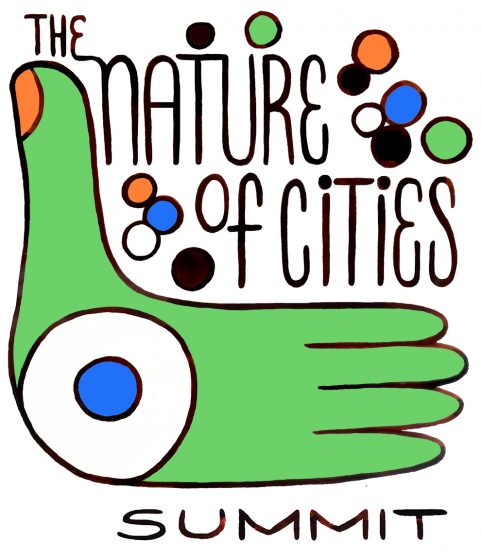
That sounds a lot like many “conversations” that we all have, no? At the very opening of The Nature of Cities Summit in Paris (June 2019), we invited the first 13 speakers to the stage. They each delivered a 90 second talk entitled “What is the city of my dreams?” under a slide with the text “This is conversations as they often are”. They delivered these 13 talks at the same time, in glorious concophony. You can read their individual texts in the next section.
But in the months prior to TNOC Summit, they also wrote a collaborative text, serially, one paragraph at a time, with the prompt: What is the nature of the city of our dreams? Under a slide with the text “Conversations as they could be”, they read their collaborative text. There were three rounds of the 13 writers (totally 39 stanzas), and within each round the order was random. Below is video of the entire opening, both the Dada part and the read collaborative text. Further below you can read the full collaborative text, and all the individual texts that each person read in concophony.
On the coming months, more and more TNOC Summit outputs, of which this is one, will appear. Visit TNOC to see them emerge.
What is the nature of the city of our dreams?
A Collaborative Meditation written serially
{Jessica Kavonic} I am from an African city and I work with local governments in African cities. Everyday I engage with rapid changes, complex environments, vibrant people and vast amounts of innovation. These cities must: embrace Nuance, develop New ways of thinking to guide how society works, and Nurture strong relationships.
{Chantal van Ham} If planet earth is our mother, then soil must be our father. Seek the silent places where no jarring sound is heard, and nothing breaks the stillness but the singing of a bird. Nature tells its secrets not to those who hurry by, but to those who walk with quiet heart and seeing eye. I hope that the Nature of Cities movement will grow around the world, to make the treasure of nature and especially soil visible and to restore the connection between people and nature.
{Carmen Bouyer} I dream that it creates the ground for new urban cultures. Opening space for respectful and resilient forms of co-existence between humans and non-humans. Welcoming rivers, wetlands, meadows, forests, plants, animals, natural cycles, rhythms … and the poetic cultures they all nurture.
{Katie Coyne} And how can that poetry of people and nature become magnified by insisting that equity and justice are a part of the Nature of Cities charge? We must be uncompromising in our belief that the best urban cultures and natures cannot co-exist and meld together without ensuring all people can experience it!
{Gillian Dick} I want an equitable, resilient city that empowers its citizens to take ownership of their own destiny in a sustainable way. Sir Patrick Geddes got it right over 100 years ago when he said that placemaking (although he didn’t call it that he called it planning) task was to find the right places for each sort of people; place where they will really flourish
{Cecilia Herzog} For places to flourish, ecological education must start since before babies are born, so all people understand their role in this wonderful world, their interdependence with native ecosystems, and then nature will be in all cities bringing not only sustainability and resilience, but for joy and harmony for all.
{Timon McPhearson} I want to be able to walk up, over, and down buildings coated in ecosystems, where nature is intricately woven into the built fabric of the city, where we don’t have to ask who benefits from urban nature, because we all have equal access to the clean air, cool breezes, and fresh food that it provides.
{Samarth Das} According to astrophysicist Nigel Calder, if Earth were a 46 year old woman, humans have been around for just over half a week, only a minute has passed since man began his Industrial Revolution! Yet in this short time the impact we have had on earth’s environment is irreversible. I dream of cities where people are empowered to fight for the protection and enhancement of these inter-woven ecosystems to ensure a natural as well as political resilience against climate change.
{Andrew Rudd} This will require an immediate infusion of openness and empathy, which are probably the most critical deficits of our entire half week on earth. Without them we will not share with other ‘tribes’, whether these are other ethnicities, other generations or other species.
{Patrick Lydon} And how does one find empathy and openness with other species? How do I cultivate a relationship with a river, with a mountain, with a tree? Does it come when I realize the nature within me?
{Marcus Collier} As cities become more and more populous, and the vast majority of humans are living their entire lives in an urban environment, less and less people will know what wild nature looks, feels, sounds and smells like. A large proportion of people will not be able to afford to visit the wider areas of the planet. So, rewilding cities is also rewilding ourselves.
{Thomas Elmqvist} I dream of cities and the people that live there become more and more the engines of innovations, continuously creating new incentives for sustainable landscape management, so that cities become the hope for the planet.
{Lindsay Campbell} Along with the transformation of our urban landscapes, I dream of the transformation our governance structures. We need to recognize the importance of civic innovation and create meaningful, authentic forms of power-sharing and joint decision-making between citizens and government.
{JK} And building effective multi-level governance. Recognising the vital role that national government play in enabling urban development, the building of a future city needs to focus on ensuring sustainability of activities by matching ambition and action with the mandates held at all levels of governance.
{CH} So we must face corruption to enable all people dream and co-create better urban environments. Otherwise wealth will continue to be concentrated in the hands of a few that control the political arena, and the majority of people will prioritize to put food on the table in the next meal. Social justice is key to transform the urban landscape.
{CvH} We are all from the same planet. Cities are the places where people meet and discover the beauty of diversity and exceptional encounters. They can connect worlds which may seem miles apart, hold the key to dialogue, bridge differences in language, nature, culture and beliefs and are the nursery for creative solutions that will make our world the most amazing home for future generations.
{MC} So we are continually seeking solutions to build the kinds of cities that foster all of these dreams. We discuss and debate novel ways that can citie-makers can be simultaneously creative, innovative and cities can evolve into natural, social, cultural, spiritual, artistic and cohesive spaces. But there is pressure for us to end the debating and begin the actions. It is here that we find ourselves in this Summit!
{SD} A summit where we define 5 key urban goals and thematic pillars that reflect the cities of our dreams—justice, livability, sustainability, health, and resilience. We must begin our actions by discarding apprehensions and inhibitions of engaging directly with our government officials, local area elected representatives and professionals and work together to create equitable and unbarricaded green urban spaces where “Nature” becomes the real client, and all of us—it’s consultants !
{AR} We begin with justice–and justice begins with us. With courage, we confront greed and shortsightedness. We reject the false narrative that barricades work better than flows. And we embrace cities’ offer of contact, camaraderie and common cause.
{TM} We must put equity first. Greener cities that are more sustainable, more livable, more resilient, and more just, must be also inclusive and address our fundamental social inequities to ensure that all lives improve.
{GD} But if we wish to take our communities, whether professional or “of interest”, with us we need to look for Nature Based solutions. We need to ensure that what we do has clear benefits for the environment; the economy and society. We need to co-produce solutions in a collaborative way. It’s usefully summed up in the quote “Nothing about us, is for us, without us”
{KC} Well-designed cities and places are only great if they maximize the stacked benefits our ecosystems provide. We must look outside our own conceptions of “US” to be vulnerable, to lean in and let go of our assumptions in the spaces where we differ, and to fully realize the total and truly equitable potential of our cities.
{LC} We must also look to many different ways of knowing – to different worldviews, epistemologies, and cultures. Privileging the modernist-rationalist-scientific worldview helped get us into this mess. Let’s acknowledge and amplify other forms of knowledge and ways of being that might help us forge a new way forward.
{TE} Cities must be more aware of the regions where they are located and take responsibility for a sustainable urbanization. This would entail managing flows and interactions in a more sustainable way, and where not only the cities are developing to become more fair, green and accessible but also the whole region.
{PL} Such bioregional awareness gave birth to one of our few examples of a sustainable metropolis. In deciding to give back to nature more than it took, Japan’s Edo-period government also gave individuals, neighborhoods, and villages creative license, so that they could come up with unique solutions for their own regions. Today, here, each of us holds this creative license, too.
{CB} Let’s express our full creativity in answering the questions: How can i best sustain life in the place I live in? How can I give back more than what I took? By each taking time to attune to the wide diversity of life cycles at play in the local landscapes, we can welcome non-anthropocentric creative answers that will reshape the cities we live in.
{AR} In cities we face difference and realize that it is cause for curiosity and celebration. Together we can address the uncomfortable and incomprehensible. We can better consider the impact of our actions on others in faraway places and times. And we can enrich life instead of extracting from it.
{JK} And as we reflect and consider let all these questions posed guide the development of tailor-made context specific solutions. A future city should build confidence of its decision makers. It should practically embrace the complexity surrounding decision making and financial and political influences. Spaces for ongoing learning, knowledge construction, visioning and relationship building are key to solution development.
{CH} Landscape is the stage, the support of all natural and human processes that can regenerate life for all. We need to enhance biocentric, biophilic and love approaches to gather all agents of landscape transformation, aiming to reintroduce native ecosystems in built and non-built landscapes. We must bring along the young people that are already mobilizing the world about climate change to revolutionize the nature of our cities.
{TM} What information do we still need to make our decisions truly able to adapt to the constantly changing nature of cities? We need to harness the rapidly emerging and evolving data ecosystem from IoT to social media data to make sense of what our ecosystems, our infrastructure, and our residents are already telling us. But we also have to understand the ethical challenges this data brings with it.
{LC} And from these data and other repositories of knowledge, how can we visualize the sometimes unseen, but crucial, social forces that shape our urban realm? By rendering these visible, can we better dance with our social-ecological systems?
{CB} “Freedom: Dada Dada Dada, a roaring of tense colors, and interlacing of opposites and of all contradictions, grotesques, inconsistencies: LIFE” concludes Tristan Tzara’s 1918 Dada Manifesto. What we want now is also spontaneity said Tzara: “Not because it is better or more beautiful than anything else. But because everything that issues freely from ourselves, without the intervention of speculative ideas, represents us. We must intensify this quantity of life that readily spends itself in every quarter.”
{PL} Dadada Da Laaaradarara! Radala da da Da DAAAAAA! Da. Da. da da da. Obachan Ojichan. Jijijiji bababa. Jiba la da BA bababa ladaradasa. Oh? Ohsa. Oh SA! Sala dalarada da! Da. Da. Da. La dee da dee da. C’est la vie.
{MC} Dada was a reaction to the social and cultural bourgeois, the business-as-usual, the hegemony of the elites. Cities of the future cannot be bourgeois, cannot have elites. Nature is the great leveller – it treats all people the same; provides nourishment for communities and individuals alike. Nature is irrational, unpredictable and surreal, making nature in cities very, very dada!
{SD} This very unpredictability is what makes it essential to engage with the environments around us- and their various issues- in a holistic way. Our engagements should range from design to pedagogy, from research to conservation, from activism to participation – all at once! In order to break away from the ‘business as usual’ we must blur the boundaries between these various modes of engagements, and ensure that traditional practices perform within expanded narratives of their respective fields. Together, we can bring about the desired, nature-driven change!
{GD} But most of all we must talk in “plain english” , take communities with us and design for understanding and social cohesion working in partnership with the nature based solutions. Does it matter what we call it as long as we all understand why we are taking the actions that we are and that we are all comfortable with them.
{KC} It’s also not just about taking communities with us… we also need to go with communities. We must recognize that one of the largest barriers to social cohesion and collectively improving our cities is fear of change. As much as we advocate for large scale change, we should also be advocates for teaching people how to cope with all scales of change from a young age. Pema Chodron said, “What a predicament! We seem doomed to suffer simply because we have a deep-seated fear of how things really are. Our attempts to find lasting pleasure, lasting security, are at odds with the fact that we’re part of a dynamic system in which everything and everyone is in process.”
{TE} We may have come a long way in embracing a more inclusive approach in identifying the challenges ahead, co-designing what should be our priorities, we might also be on the way to collectively generate, co-produce new knowledge on how to create solutions addressing these challenges. In my mind, where we have failed is in working together to implement these solutions, the co-implementation where we jointly evaluate and monitor for our collective learning of what works and what doesn’t in each local context.
{CvH} And exactly that has been the vision of David Maddox and Mike Houck, when they started The Nature of Cities virtual platform back in 2012. A network of the brightest thinkers, peaceful warriors, and brave heroes who show leadership and inspire us all to create positive change to the way we work together in cities. And here we are today, for the 1st global gathering, creating new connections, sharing ideas and finding the inspiration to do more than we ever imagined in creating cities that are resilient, sustainable, livable, and just.
UNISON: These are some ideas that we have created together. Thank you.
about the writer
Jessica Kavonic
Jess is part of ICLEI’s Cities Biodiversity Center as well as ICLEI Africa’s Resilience team. She has a background in atmospheric science with a more specialised knowledge of climate change and its relationship with a sustainable approach to development.
Jessica Kavonic
I am from an African city and I work with local governments in African cities. Every day I engage with rapid changes, complex environments, vibrant people and vast amounts of innovation. But what is the nature of the city of my dreams?
We have been asking the same question to many stakeholders in African cities and they have provide a list of principles that they felt were essential for a future city to adopt. Some of these include:
• Work within context
• Embrace creativity and innovation
• Build networks of intermediaries
• Recognise that informal systems are critical parts of African cities
• Encourage adaptive and flexible policies
• Support regenerative approaches
• Strengthen systems thinking
• Encourage knowledge flows and overlapping research/policy agendas.
• Strengthen coordinated work between multiple stakeholders, sectors, scales and perspectives
• Create diversity – in both the approach to tackling the problem, and the solution
For me, a future African city now rest on the HOW. It is in implementing and embracing new ways of thinking to guide how society works. It is in applying new ways of planning and decision making in order to effectively allow future cities to deal with the rapid changes expected. Future cities need to be solution and action orientated. They should build confidence of their decision makers. They should practically embrace the complexity surrounding decision making and financial and political influences. Spaces for ongoing learning, knowledge construction, visioning and relationship building are key in supporting these shifts.

about the writer
Chantal van Ham
Chantal van Ham is a senior expert on biodiversity and nature-based solutions and provides advice on the development of nature positive strategies, investment and partnerships for action to make nature part of corporate and public decision making processes. She enjoys communicating the value of nature in her professional and personal life, and is inspired by cooperation with people from different professional and cultural backgrounds, which she considers an excellent starting point for sustainable change.
Chantal van Ham
If planet earth is our mother, then soil must be our father. Seek the silent places where no jarring sound is heard, and nothing breaks the stillness but the singing of a bird. Nature tells its secrets not to those who hurry by, but to those who walk with quiet heart and seeing eye. I hope that the Nature of Cities movement will grow around the world, to make the treasure of nature and especially soil visible and to restore the connection between people and nature.
We are all from the same planet. Cities are the places where people meet and discover the beauty of diversity and exceptional encounters. They can connect worlds which may seem miles apart, hold the key to dialogue, bridge differences in language, nature, culture and beliefs and are the nursery for creative solutions that will make our world the most amazing home for future generations.
And exactly that has been the vision of David Maddox and Mike Houck, when they started The Nature of Cities virtual platform back in 2012. A network of the brightest thinkers, peaceful warriors, and brave heroes who show leadership and inspire us all to create positive change to the way we work together in cities. And here we are today, for the 1st global gathering, creating new connections, sharing ideas and finding the inspiration to do more than we ever imagined in creating cities that are resilient, sustainable, livable, and just.
about the writer
Carmen Bouyer
Carmen Bouyer is a French environmental artist and designer based in Paris.
Carmen Bouyer
The city of my dreams is a landscape that thrives with a rich diversity of life forms, of life styles, of life ways. In this dream place all humans and non-humans are all respected in their integrity and equally acknowledged for their unique participation to this large mosaic of ways of being. Living together, close to each other, in a city system, has enable us all to develop multi-faceted conversations, creating unexpected pluricultural ideas and communities, shaping wildly divers open-minded cultures. In this city, streets and parks have melted together. Walking through it is a pleasure for all senses. With its many sounds, languages, tastes, colors, lights, textures, scents, its common space is a gift to the well being of all. Food can be foraged down the corner and everyone can swim in the nearing lake or river or sea. You can drink harvested water from the rain… Crafts and live arts flourish.
about the writer
Katie Coyne
Katie co-leads the Urban Ecology Studio at Asakura Robinson where she is a passionate advocate for design informed by studying the overlap between social and ecological systems.
Katie Coyne
The city of my dreams exists in segmented storylines based on lived experiences and identities. It’s a place where I know no one will yell dyke from their car. My friends will not be attacked walking to their car after dancing the night away with loved ones at the gay bar. It’s a place where it is such a non-issue that I am a butch lesbian married to another woman that even the well-intentioned folks don’t need to tell me about their LGBTQ family. In this city, we take care of our folks experiencing homelessness with wrap-around care. We take down monuments to white supremacy and ensure the diversity of our city is not put at risk because of racist policies. Those are the issues that keep me up at night and the reason why the lens through which I view nature, ecology, and resilience in cities MUST be intersectional and geared toward justice. When I have the luxury of thinking beyond that, I know that the city of my dreams is not static – it’s dynamic! This city inspires enough wonder to challenge the comfort of my assumptions. This city’s landscapes change enough with the seasons and over the years to remind me of impermanence. Every space is infused with function across ecological, social, and economic systems. In this ideal city, I don’t wish for harmony—the friction amongst differing values in community is where the most interesting work is done. Folks who wish for entirely harmonious existence are only searching for a comfort that doesn’t exist.
That’s the big picture. None of what I’ve mentioned above exists without folks willing to have hard conversations. Which, is perhaps why the most important component of the city of my dreams is empathy at its core.
about the writer
Gillian Dick
Gillian is the Manager of Spatial Planning – Research & Development team within the Development Plan Group at Glasgow City Council.
Gillian Dick
When you think about collaboration what is the first thing that comes to mind? It’s inclusive. It’s equitable. And it’s a meeting of like-minded people with a shared objective. This is the front facing view that folk participating in collaborative efforts want to project to the wider world.
In reality, collaborative projects can be very different for local authorities. In the past Glasgow has had the academic community present us with proposals and asked us to sign on the dotted line. These statements are then presented back to funding bodies as evidence of collaboration.
It feels very different to us. It feels like we are being “mined” for our own research and innovation (often described by academics as “grey” research, as in their view it’s not subjected to academic rigour or peer review), which is then repackaged to be validated by the academic world. The repetition of this process, with the view that there is limited value academically in the research that local authority practioners undertake, taints the process of collaboration between academics and practioners and impacts negatively on trust and understanding.
It’s a breath of fresh air when you encounter a different form of collaboration between academics and local authorities. When we Co-produce research it’s more likely to have joint ownership and understanding. Working together we can innovate in a real world situation and produce sustainable long term solutions to some of the “wicked” issues that local authorities face. It allows us to empower communities to work alongside us and generates trust, empathy and cost effective actions. To take a quote I saw on a Belfast mural “Nothing about us, is for us, without us”.
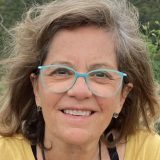
about the writer
Cecilia Herzog
Cecilia Polacow Herzog is an urban landscape planner, retired professor at the Pontifical Catholic University of Rio de Janeiro. She is an activist, being one of the pioneers to advocate to apply science into real urban planning, projects, and interventions to increase biodiversity and ecosystem services in Brazilian cities.
Cecilia Herzog
The city of my dreams is a just city, where all the people have access to clean air, clean water and organically grown food. Where nature thrives in all open and built spaces. Where residents vote on representatives who are concerned to give back a regenerative city, that is positive for the planet to keep providing us the wonders of nature in our common home.
All countries share wisdom acquired from their ancestors and cultures. Regional and local policies and actions orient ecological transformations in all urban landscapes, enhancing ecosystems and the benefits they provide to keep our biosphere’s dynamics.
Ecological knowledge is intertwined in people’s minds since before babies are born, because their parents, families and friends know that their lives are interconnected with the web of biodiversity that sustain our Homo sapiens species.
Our cities are biocentric, biophilic and beautiful. Art is everywhere, inspiring and nurturing our XXI Century civilization.
Nature-based solutions drove contemporary human interventions to restore the damages conventional gray engineering hasmade during the previous 200 years.
Cities became a healthy habitat for us, providing high quality of life and well-being for ALL.
These are ways we can move forward together.
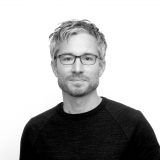
about the writer
Timon McPhearson
Dr. Timon McPhearson works with designers, planners, and local government to foster sustainable, resilient and just cities. He is Associate Professor of Urban Ecology and Director of the Urban Systems Lab at The New School and Research Fellow at the Cary Institute of Ecosystem Studies and Stockholm Resilience Centre.
Timon McPhearson
I want to be able to walk up, over, and down buildings coated, literally draped with nature, where ecosystems are intricately woven into the built fabric of the city, where we don’t have to ask who benefits from urban nature, because there is so much, everywhere, that we all have equal access to the clean air, cool breezes, and fresh food that it provides.
But we are not there yet. To move from the present, to the future we want, we have to put equity first. Greener cities that are more sustainable, more livable, more resilient, and more just, must be also inclusive and address our fundamental social inequities to ensure that all lives improve. Green spaces can’t just be for the wealthy, and when we enrich neighborhoods that have little existing nature, we have to do so while also finding ways to deal with the need for affordable housing, and basic urban services.
I’m excited about the Seeds of a Good Anthropocene that already exist in the present. To have a better future, we first have to imagine it, then we need to make plans that are truly transformative, and get to work to what has to happen in the next ten years, next five years, next week.
This will also require information. What information do we still need to make our decisions truly able to adapt to the constantly changing nature of cities? We need to harness the rapidly emerging and evolving data ecosystem from IoT to social media data to make sense of what our ecosystems, our infrastructure, and our residents are already telling us. But we also have to understand the ethical challenges this data brings with it and do much better to incorporate other ways of knowing, other knowledge systems, while also sharing information better, which is itself another equity challenge. I am hopeful, I am eager to make transformative change, and to work with the knowledge holders on the ground, in our neighborhoods, who already know what they want, and have innovative ideas for hot to get from here, to that more livable, more resilient, and more sustainable future.
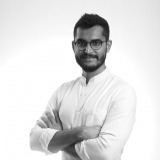
about the writer
Samarth Das
Samarth Das is an Urban Designer and Architect based in Mumbai. Having practiced professionally in Ahmedabad, Mumbai, and subsequently in New York City, his work focuses on engaging actively in both public as well as private sectors—to design articulate shared spaces within cities that promote participation and interaction amongst people.
Samarth Das
Consumed by intense occupations with clients and private projects, architects and planners tend to overlook the immediate environment within which they operate. The city around us is constantly changing, evolving and adapting. Cities, as they grow, are producing several backyards of neglect and exclusion. These backyards are the result of ad-hoc development, lack of a larger urban planning vision and quite simply the market forces that drive today’s development agenda. Most often, these areas of neglect are those that are of no monetary value in terms of real estate potential. Unfortunately, in the case of Indian cities, these are found to be our natural assets- water courses, lakes, mangroves, wetlands, salt pan land and creeks.
Our governments too have shared the lack of interest in protecting and developing these spaces- and consequently have turned these into some of the dirtiest and most unapproachable areas within our urban environments. With time, these spaces lie in decadence and begin attracting feelings of apathy and disdain. Once considered assets for the growth of communities, these natural assets are now perceived as barriers to development within our cities. Major world cities have, over the years, integrated their natural assets with the goal of creating better urban environments that contribute towards a better quality of life. It is about time that Indian cities take up the similar objectives- in order to create sustainable cities of the future which shift the focus away from pure consumerism towards a more balanced growth with nature.
about the writer
Andrew Rudd
Andrew Rudd is the Urban Environment Officer for UN-Habitat’s Urban Planning & Design Branch in New York, where he leads substantive advocacy for the urban dimension of the 2030 Agenda for Sustainable Development (including the SDGs).
Andrew Rudd
Four friends met and ended up debating the how the world would end. The ecologist said ‘climate change’, the philosopher ‘nuclear holocaust’, the epidemiologist ‘an airborne virus’ and I said ‘resource scarcity’. At the time I thought oil and phosphorus; resources such as those. But I’ve since realized they are symptoms of something deeper.
The resources we lack so desperately are openness and empathy. They are the most important deficits of our time. Without them we cannot share with other ‘tribes’, whether these are other ethnicities, other generations or other species. Now more than ever, we need collective effort to prevent planetary catastrophe. Instead, we are putting up walls. Through zoning and algorithms, suburbanization and social media have divided us. And when we don’t physically meet those who are unlike us, it becomes harder and harder for us to empathize with them. Right-wing populism has exploited this. But the world of our nightmares can find salvation in the city of our dreams. With courage, we can confront greed and shortsightedness. And we can reject the false narrative that barricades work better than flows. After all, it is the nature of cities to offer contact, camaraderie and common cause. In cities we face difference and, hopefully, see that it is cause for curiosity and celebration. Together we can address the frequent incomprehensible and uncomfortable. And we can better consider the impact of our actions on others in faraway places and times. In the city of our dreams we enrich life instead of extracting from it.
about the writer
Patrick M. Lydon
Patrick M. Lydon is an American ecological writer and artist based in Korea whose seeks to re-connect cities and their inhabitants with nature. He is an Arts Editor here at The Nature of Cities.
Patrick Lydon
In the city of my dreams, the path of my morning commuteto the Agroecology Cooperativeis halted by a caterpillar, the kind that will transform some day soon, into a yellow swallowtail. Reachingdown, Ibring itwith me, out of the busy footpath, and into the central urban forest.
Walking through an urban forest on this day, means an encounter with slender seven-story buildings, intermingling with ten-story trees, the ground interspersed with foliage and small animal life. Vegetables, fruits, perennial grains, pungent herbs, and a colorful pallet of plants we used to call weeds, but now refer more accurately to as healers of people and the land, all thrive together. Within these mostly wild urban gardens, wildlife also make their home, with rabbits, cats, deer, fox, and the occasional wild boar all paying visits to the forested downtown core.
In the city of my dreams, a group of meditators sit dailyon the steps of the Center for Non-Judgemental Awareness and Connectedness. A pillar of our local government, the center has renderedpolice officers andjudiciary officials unnecessaryfor over a century. Fronting the steps of the center, a family of deer sit lazily in the middle of the main avenue, as the traffic—all on foot and bicycle—simply re-routes around them. A few decades ago, the city banished cars altogether, a part of its ‘slow life’ proclamation, and today nearly everything moves through the re-wilded streets on foot, or some other human powered mechanism. Trains are still used for long-distance travel, though even they have fallen somewhat out of fashion as many humans seem happy to hike or cycle around the country.
In the city of my dreams, though we still have elected officials, few of the humans holding public office are studied politicians. Most come from backgrounds like herbalist, natural baker, brewer, agroecological farmer, or some other pursuit involved directly in building personal relationships with nature.
Emerging from the forest—and releasing thecaterpillar from my handsinto a bush of fennel—I run across thecity’s mayor, who is also the chair of the Council for All Beings.Recently elected by a multi-species vote, the Mayor is thecity’s oldest camphor tree. We are proud to say that she is the first ever camphor to hold the office in a major city.
about the writer
Marcus Collier
Marcus is a sustainability scientist and his research covers a wide range of human-environment interconnectivity, environmental risk and resilience, transdisciplinary methodologies and novel ecosystems.
Marcus Collier
A very large proportion of the human population now live in urban areas, and the remainder are heavily influenced by the dominance of cities and towns globally. All human communities are now urbanised to some extent. The growth of cities and urban living has resulted in a significant altering of the planet’s ecosystems and their services. We are hearing, on a daily basis, about the problems caused by climate and environmental changes. So, society has devised TECHNICAL solutions and many governments have been promoting BEHAVIOURAL CHANGE solutions, in order to try to mitigate the negative impacts of climate change on our daily lives and to build resilient urban communities. The nature-based solution approach sees NATURE as a technology that can provide solutions to climate pressure in cities, and we see the CO-CREATION approach as a key solution to modify our unsustainable behaviour. Nature-based solutions are inspired by nature, are cost effective, and are capable of providing multiple co-benefits in cities. These co-benefits include environmental services such as clean air and water, pollution control, and carbon sequestration), ecological services (such as increased biodiversity, better connectivity, and habitat restoration), and social services (such as improved health and well-being, cohesive communities, and social innovation). In an ever increasing urbanising world, contact with nature is becoming rare in cities, so by renaturing cities through nature-based solutions many more people will have access to the diverse benefits of contact with nature.
about the writer
Thomas Elmqvist
Thomas Elmqvist is a professor in Natural Resource Management at Stockholm University and Theme Leader at the Stockholm Resilience Center. His research is on ecosystem services, land use change, natural disturbances and components of resilience including the role of social institutions.
Thomas Elmqvist
I dream of cities and the people that live there become more and more the engines of innovations, continuously creating new incentives for sustainable landscape management, so that cities become the hope for the planet.
Cities must be more aware of the regions where they are located and take responsibility for a sustainable urbanization. This would entail managing flows and interactions in a more sustainable way, and where not only the cities are developing to become more fair, green and accessible but also the whole region.
We may have come a long way in embracing a more inclusive approach in identifying the challenges ahead, co-designing what should be our priorities, we might also be on the way to collectively generate, co-produce new knowledge on how to create solutions addressing these challenges. In my mind, where we have failed is in working together to implement these solutions, the co-implementation where we jointly evaluate and monitor for our collective learning of what works and what doesn’t in each local context.
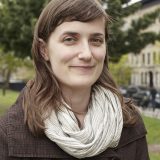
about the writer
Lindsay Campbell
Lindsay K. Campbell is a research social scientist with the USDA Forest Service. Her current research explores the dynamics of urban politics, stewardship, and sustainability policymaking.
Lindsay Campbell
The city of my dreams is never finished.
It is always still becoming, leaving space (and time) for communities to create places that meet their needs, but also—perhaps as importantly—to express themselves. To shape landscape and built environment in ways that reflect local culture, priorities, hopes, and dreams and carry with them the legacies of those that came before. A layered, dense, cosmopolitan strata, the landscape is imbued and activated with diversity and memory. While we continue to evolve toward the future, we hold and honor our ancestors.
These places are a co-creation of residents of all kinds—human and nonhuman—in a complex, collaborative dance. So not only do we leave space for our human neighbors, but we have figured out how to coexist and even thrive with rich, biodiverse assemblages of others. We know the names and stories of our plant and animal kin. We understand their capabilities and their needs and we design our spaces to support their inhabitation as well as ours. We learn from and with them; we recognize our interdependence.
The city of my dreams has opportunities for people to make meaning and live with dignity—whatever that looks like to them. People have jobs that they care about, homes they can afford, transit that is accessible, food that is healthy and nourishing, and many ways to create joy. They have relationships with family, friends, neighbors, and a broad tapestry of civic actors with whom they feel connected.
Through that deep understanding of and lived experience of interconnectedness—with other humans and nonhuman others—we figure out how to forge a new way forward for the planet. Perhaps our inspiration will come from a neighbor down the street, or the photosynthesis of plants, or the intelligence of bees, or the murmuration of starlings—who knows what source might catalyze a new idea? From that idea, we go through the bold, necessary, and drastic steps to decarbonize our economy, transition toward sustainability, and truly address climate change.
But all those actions start with love, reciprocity, and empathy. This also means listening to, acknowledging, and following the wisdom of those who have previously borne the brunt of our society’s failures. We cannot have ecological sustainability without social justice. A city where only a few thrive while others suffer is a nightmare of a dream. Instead, we have constructed a more equitable and just way forward—where we all participate in and benefit from the co-creation of our city, our home.

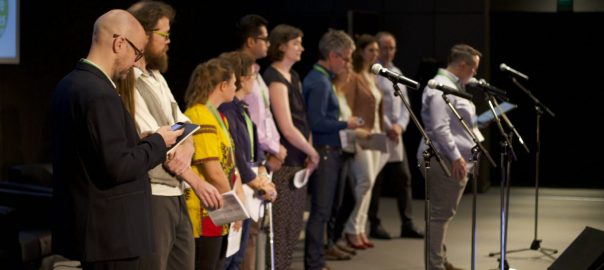






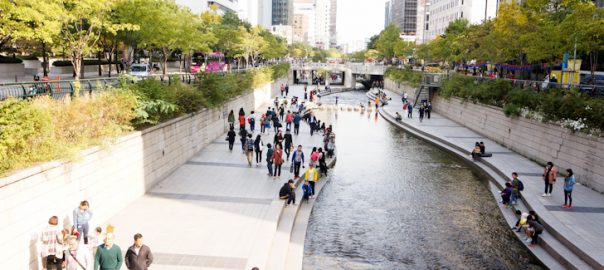
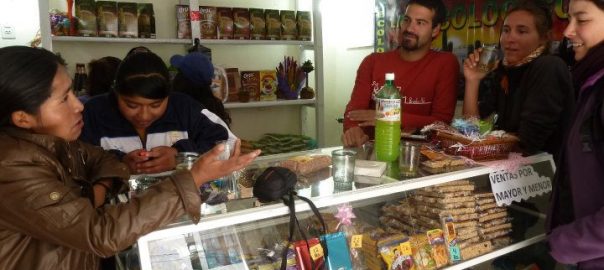
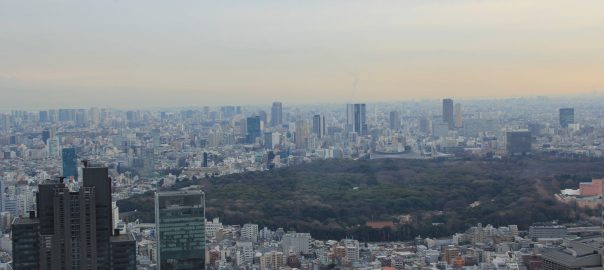
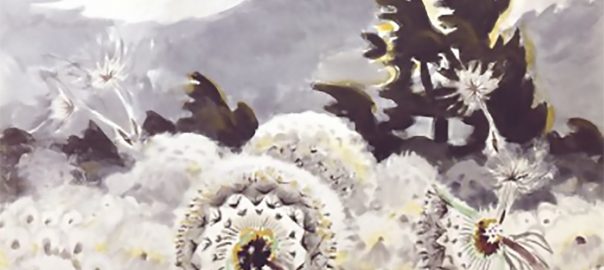
Add a Comment
Join our conversation